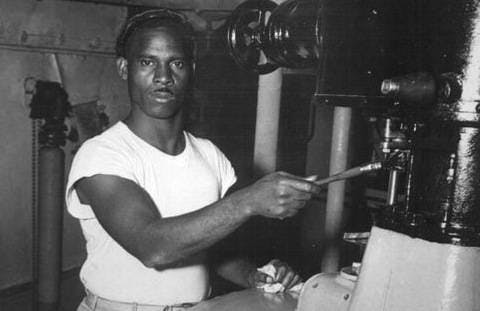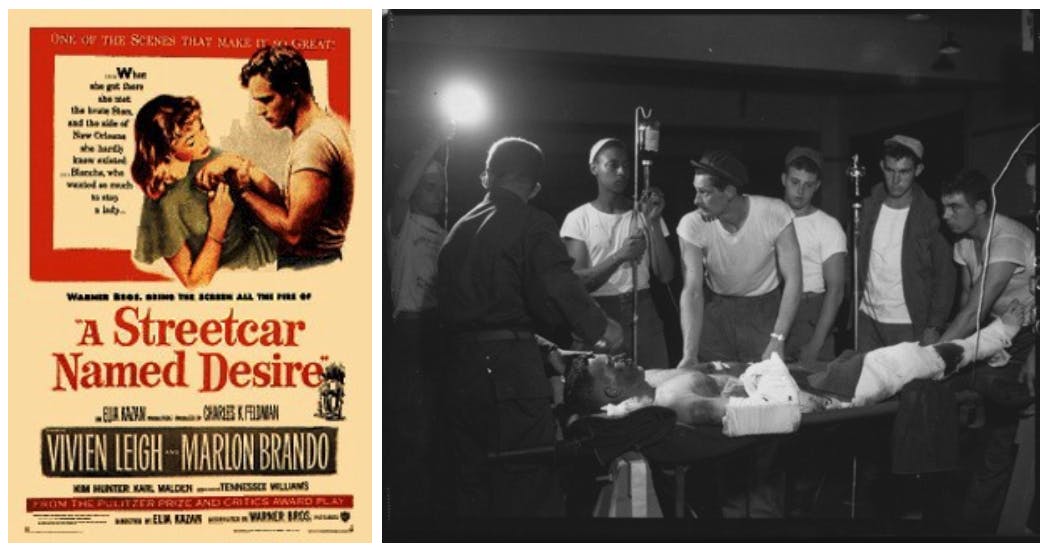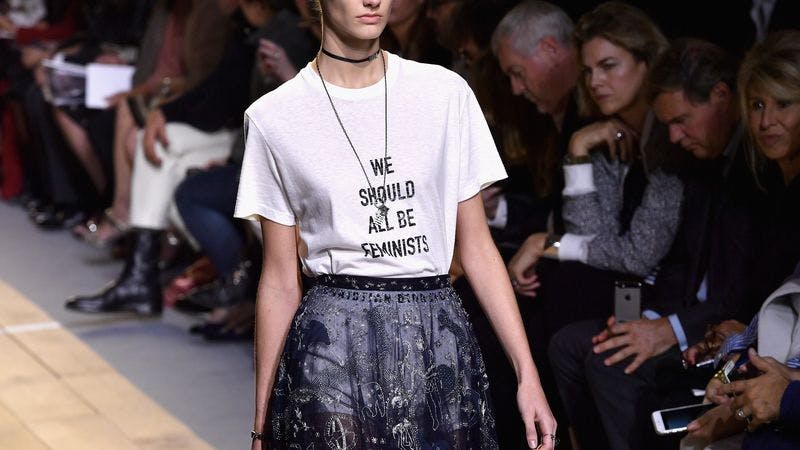The History of the T-Shirt
Every hero has an origin story—this is the t-shirt's.

Have you ever wondered how the t-shirt came to be such an iconic staple in American fashion and culture? Originally designed as an undergarment, the t-shirt has transformed into the most ubiquitous item in apparel — and the most powerful.
Read the story of the simple garment that would transform the fashion world, create its own industry in garment decorating, and change the way messages are shared forever.
The Origin of the T-Shirt
The t-shirt as we know it today is an apparel staple. The simple garment is so deeply ingrained in world culture that it’s easy to forget that, relatively speaking, the t-shirt itself is quite young.
The origins of the t-shirt date back to the late 19th century, when laborers would cut their jumpsuits in half to keep cool in warmer months of the year.
The first manufactured t-shirt was invented between the Spanish-American War in 1898, and 1913 when the U.S. Navy began issuing them as standard undershirts.

Even then, it took until 1920 for the actual term “t-shirt” to be inducted into the English dictionary, thanks to F. Scott Fitzgerald being the first person to publish the word in his novel This Side of Paradise.
“So early in September Amory,” writes Fitzgerald, “provided with ‘six suits summer underwear, six suits winter underwear, one sweater or T-shirt, one jersey, one overcoat, winter, etc,’ set out for New England, the land of schools.”
Brando, Dean, and Rebellion
Though the t-shirt was created in the early 20th century, it was rare to see it worn as anything other than an undershirt. It wasn’t uncommon to see veterans wearing a t-shirt tucked into their trousers post-World War II, but outside of that, t-shirts were almost exclusively used underneath “proper” clothes.
“[The T-shirt] is a really basic way of telling the world who and what you are.” — Dennis Nothdruft
Then came Marlon Brando and James Dean.
In 1950, Marlon Brando famously donned a white t-shirt as Stanley Kowalski in A Streetcar Named Desire, only to be followed by James Dean in 1955\'s Rebel Without a Cause. Thanks to these two founding fathers, the popularity of the t-shirt as a stand-alone outerwear garment skyrocketed.

Not only was the t-shirt as an outer-garment becoming acceptable, but it was also being associated with a movement of rebellion.
“It was rebellious, because T-shirts were actually undergarments … It was a tough political statement,” says Dennis Nothdruft, curator of the exhibition titled T-shirt: Cult — Culture — Subversion, T-shirt: Cult — Culture — Subversion, which showcased the radical history of the t-shirt at the Fashion and Textile Museum in London last year.
Graphic T-Shirts and the Birth of T-Shirt Printers
By the time the 1950s rolled around, a number of companies in Miami, Florida began experimenting with garment decoration, but the field was still far from what would later turn into a multi-billion dollar industry of t-shirt printing.
Thomas E. Dewey, a Republican presidential candidate, created what was perhaps the first ever slogan t-shirt with his “Do it with Dewey” campaign, but outside of that, there were not many instances of embellished t-shirts.
Ready to design? Read Using Fonts Effectively In Your T-Shirt Designs (Plus Free Font Downloads)
Later in the 1950s though, one of the aforementioned printing companies, known then by the name Tropix Togs, held the original license to print Walt Disney characters. Around this time people began to realize the profit that was to be made in graphic t-shirts, and in the 1960s, innovations to the print field, including the birth of screen printing, would help turn the t-shirt industry into what it is today.
“The Medium for the Message”
Though graphic t-shirts and t-shirt printing began in the 1950s and 1960s, it wasn’t until the ’70s that t-shirts became the powerful messaging platform that we know them as today. For this, we can thank the punk movement.
Rising popularity in rock band logos, along with protests of the Vietnam War, really helped solidify the t-shirt as a messaging platform. It was “about shocking and outraging people and challenging the status quo,” says Nothdruft.
The New York Times perhaps said it best, when the rise of the graphic t-shirt lead them to name it “the medium for the message.”

Nothdruft, in his description of the exhibit, calls the t-shirt a “blank canvas … [that] associates you with a specific cultural movement or tribe.”
Certainly, the t-shirt’s fluid nature plays a part in its wide appeal. A blank canvas, a t-shirt can be seen as high fashion or casual wear, disruptive or unassuming, all depending on how you wear it.
“In its most pure form, it’s the most democratic garment,” says Nothdruft to BBC.

Not Going Anywhere Soon
All of this to say, the t-shirt has become not only an American staple, but an essential garment worn around the world, and their unique ability to convey a message hasn’t gone anywhere.
From SNL hosts’ various viral t-shirt moments to Dior’s famous “we should all be feminists” design, t-shirts are proven to be a preferred medium for sharing messages ranging from rebellious to joyful and everything in between.
Do you have a message you’re ready to spread on a t-shirt? Let us know! At Real Thread, we print super soft custom t-shirts that people love to wear and talk about, and we’d love to help you spread your message to the world.


